Putting the Garden to Bed
July is the end of the growing season in South Florida. It just gets too hot. This is the time to take care of the soil that will be used for the season beginning in October. In April, the garden was at its peak. The vegetables were deep green and full of produce.
By the beginning of July, everything but the herbs had been pulled up or was close to the end of production.
The last to go were the tomatoes. They grew to six feet tall and produced for nearly three months. By mid July, the plants were exhausted and were wilting. It was time to pull them out and prepare the garden for the summer.
Putting the Garden to Bed
I learned a new term this year… soil solarization. I knew about covering the garden to let the sun bake the soil during the hot summers, but I didn’t know the process had a formal name.
Florida soil has nematodes, fungi like Phytophthora Root Rot, other pests and weeds. A good and organic way to kill off these gardening nemeses is soil solarization. The heat forces the nematodes to move from the heated area and kills other pests, weeds, weed seeds and fungi.
Dirty Work
Before the garden is covered for the summer, a certain amount of preparation is necessary. All the plants must be pulled up by the roots from the raised garden boxes. The soil has to be raked to remove root material and to smooth it out. A small ridge is left in the center to help shed any water that collects on the plastic.
Before covering the box, water it well. Moisture aids the heat of the sun to bake the soil and kill the weeds, weed seeds, nematodes and pathogens during the eight weeks it is covered.
Covering the Soil
Last season, I covered my garden but had little success killing off the pests, weeds and pathogens. I did some research and have since found out that I should not have used black plastic sheeting. I used black, because I thought that dark material would soak up more of the sun’s heat. However, it shades the soil underneath rather than heating it up.
This year I used Black Hawk 2-mil, clear plastic sheeting which I purchased at Lowe’s Home Improvement. I would guess that it can be purchased at any big box building materials or hardware store.
The sheeting can be pressed into the ground around the edges or held down by something substantial enough that it does not move. I used red bricks.
The plastic has to be held tightly so that no heat escapes. It will stay this way and bake in the hot Florida sun for about eight weeks. Then the plastic comes off and we start planting again.
Tags: above ground garden · Raised Garden · soil solarization2 Comments
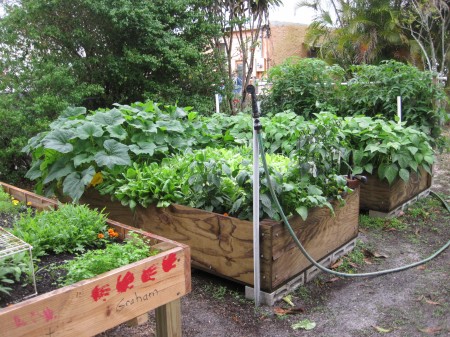
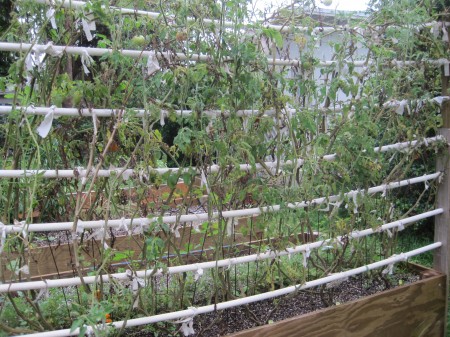
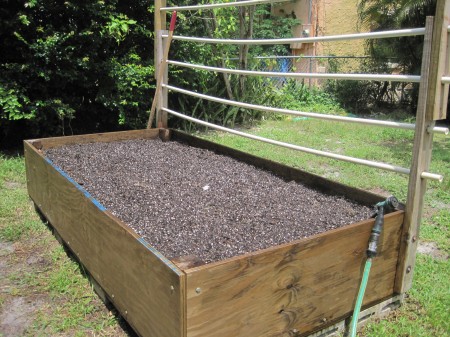
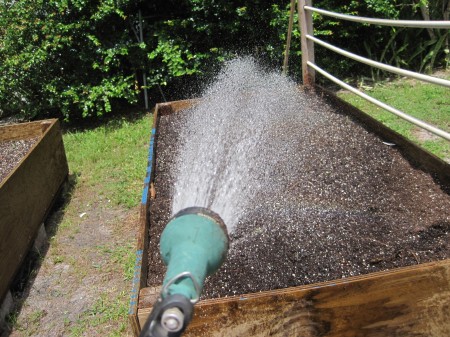
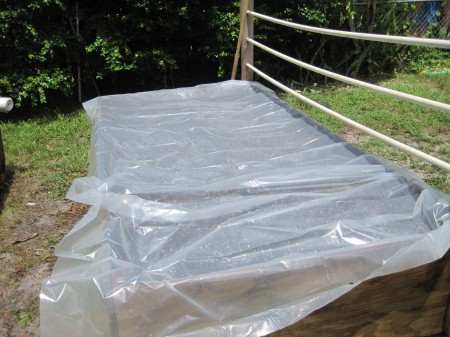
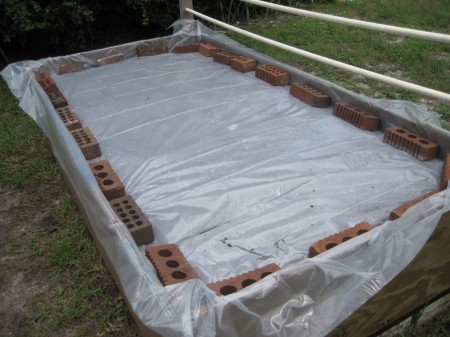
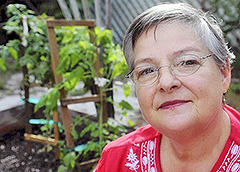
I realized I had to do this last year after suffering for 3 years not knowing what was wrong and my garden did well but now it too is exhausted and I am getting ready to cover it again. It’s not a fun task. I live in Cape Coral so it is already too hot. I’m on my way to home depot to get extra bricks to hold down the plastic. Good luck to you !
Diana, I should be doing mine, too, but I have been holding off until the unusual rain event event we have had in Southeast Florida ends. The idea is to dry out the soil and then let it bake for a couple of months. I am going to give my boxes a few days of hot sun before throwing the plastic over them. Good luck to us both.